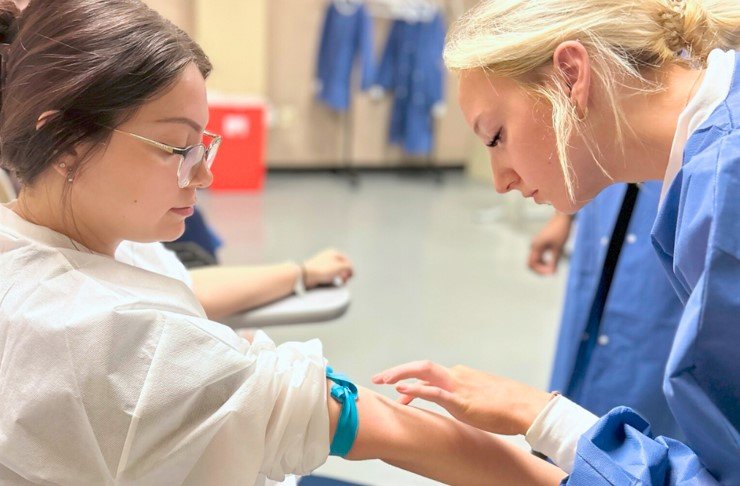Strategies for Efficient and Timely Procurement of Palliative Care Supplies in Hospitals
Summary
- Hospitals are implementing various strategies to ensure the efficient and timely procurement of necessary palliative care supplies and equipment
- Centralized procurement processes, demand forecasting, and inventory management are key initiatives being adopted by hospitals
- The use of technology, collaboration with suppliers, and staff training are also important factors in enhancing the Supply Chain management in hospitals
Introduction
Efficient and timely procurement of necessary supplies and equipment is crucial for hospitals, especially when it comes to providing palliative care to patients. Palliative care focuses on improving the quality of life for patients facing serious illnesses, and having the right supplies and equipment on hand is essential for delivering the best care possible. In this article, we will explore the strategies that hospitals in the United States are implementing to ensure the efficient and timely procurement of necessary palliative care supplies and equipment.
Centralized Procurement Processes
One of the strategies that hospitals are using to improve the procurement of palliative care supplies and equipment is implementing centralized procurement processes. By centralizing the procurement function, hospitals can streamline the purchasing process, reduce costs, and improve inventory management. Centralized procurement allows hospitals to leverage their buying power, negotiate better prices with suppliers, and standardize the procurement process across departments.
Demand Forecasting
Another important initiative that hospitals are adopting is demand forecasting. By accurately predicting the demand for palliative care supplies and equipment, hospitals can ensure that they have the right quantities on hand when they are needed. Demand forecasting helps hospitals to avoid shortages or overstocking, which can lead to delays in patient care and increased costs. By analyzing historical data, trends, and other factors, hospitals can develop more accurate demand forecasts and optimize their inventory levels.
Inventory Management
Effective inventory management is also crucial for ensuring the efficient procurement of palliative care supplies and equipment. Hospitals are implementing inventory management systems that allow them to track supplies, monitor usage, and reorder items as needed. By maintaining optimal inventory levels, hospitals can reduce waste, minimize stockouts, and improve overall efficiency in the Supply Chain. Inventory management systems also help hospitals to identify obsolete or slow-moving items, which can be discontinued or replaced with more in-demand products.
Utilization of Technology
Technology plays a vital role in enhancing the procurement of palliative care supplies and equipment in hospitals. Many hospitals are leveraging technology solutions such as procurement software, inventory management systems, and electronic catalogues to streamline the procurement process. These tools automate manual tasks, improve visibility into the Supply Chain, and enable real-time tracking of orders and inventory levels. By leveraging technology, hospitals can reduce the risk of errors, increase efficiency, and improve overall Supply Chain management.
Collaboration with Suppliers
Collaboration with suppliers is another key strategy that hospitals are using to enhance the procurement of palliative care supplies and equipment. By working closely with suppliers, hospitals can build strong relationships, negotiate favorable terms, and ensure timely delivery of critical items. Collaboration with suppliers can also lead to increased transparency, better communication, and the ability to address any issues or challenges that may arise. By partnering with reliable and trusted suppliers, hospitals can strengthen their Supply Chain and improve the quality of care for patients.
Staff Training
Staff training is an essential component of effective procurement and Supply Chain management in hospitals. Hospitals are investing in training programs to educate staff on best practices, protocols, and procedures related to procurement. By equipping staff with the necessary knowledge and skills, hospitals can enhance the efficiency of the procurement process, improve inventory management, and reduce errors. Training also helps to ensure compliance with Regulations, standards, and policies, and promotes a culture of continuous improvement within the organization.
Conclusion
Efficient and timely procurement of necessary palliative care supplies and equipment is critical for hospitals to deliver high-quality care to patients. By implementing centralized procurement processes, demand forecasting, inventory management, utilizing technology, collaborating with suppliers, and providing staff training, hospitals can enhance their Supply Chain management and improve overall efficiency. These strategies help hospitals to optimize their procurement processes, reduce costs, minimize waste, and ultimately, provide better care for patients in need of palliative care.

Disclaimer: The content provided on this blog is for informational purposes only, reflecting the personal opinions and insights of the author(s) on the topics. The information provided should not be used for diagnosing or treating a health problem or disease, and those seeking personal medical advice should consult with a licensed physician. Always seek the advice of your doctor or other qualified health provider regarding a medical condition. Never disregard professional medical advice or delay in seeking it because of something you have read on this website. If you think you may have a medical emergency, call 911 or go to the nearest emergency room immediately. No physician-patient relationship is created by this web site or its use. No contributors to this web site make any representations, express or implied, with respect to the information provided herein or to its use. While we strive to share accurate and up-to-date information, we cannot guarantee the completeness, reliability, or accuracy of the content. The blog may also include links to external websites and resources for the convenience of our readers. Please note that linking to other sites does not imply endorsement of their content, practices, or services by us. Readers should use their discretion and judgment while exploring any external links and resources mentioned on this blog.
